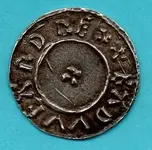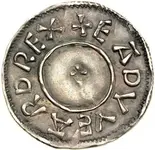believes it or not, i was reading a story once in national geo-graph-ick 'bout the real artifacts having stamped copy or facsimile in them, and the fake one's said nothing. I believe it was in mexico regarding stolen antiques, and they actually ended up taking the unstamped fake one's instead of the ones that said copy. ask your parents where these were obtained from, IF THEY DID NOT LOOK SO OBVIOUSLY FAKE, there woulda been a slim chance of them being real despite the COPY mark.



